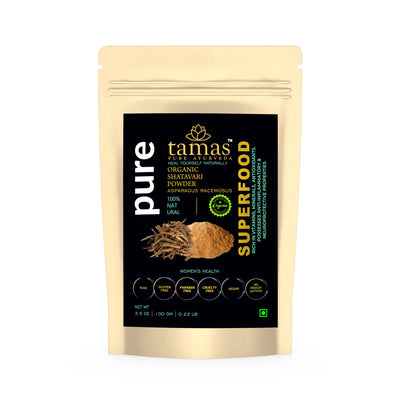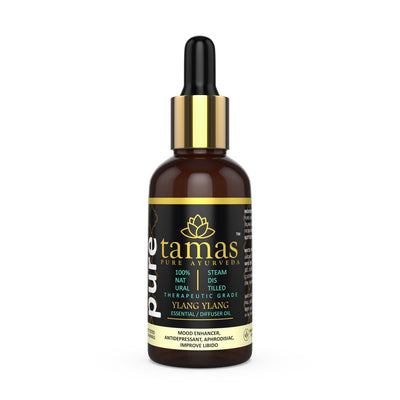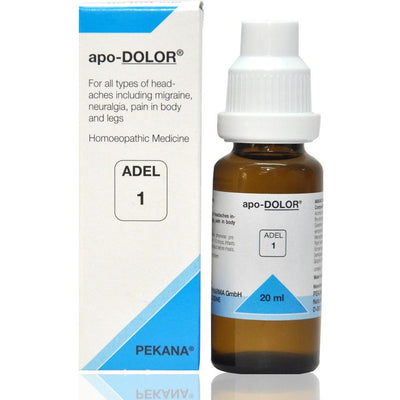
The three Doshas -- Vata, Pitta, Kapha -- are viewed as the crux of the human body from an Ayurvedic perspective. Bringing these Doshas to their optimum levels determines the physical, mental, and emotional state of an individual. An imbalance in the Vata can play a huge role in inhibiting motor skills and causing issues with the muscles and joints. The condition of Vata imbalance leads to lower absorption of vital nutrients that act as fluids for the joints. Without these nutrients, the joints and muscles in the body become stiff and can cause a great deal of discomfort pertaining to various motor skills. Kerala Ayurveda’s Myaxyl Oil is the ideal Ayurvedic pain relief oil and has been providing thousands of customers with relief.
Myaxyl Pain Relief Ayurvedic OilMyaxyl Oil is a proprietary medicine developed with an aim to provide complete care in inflammatory and painful conditions. Myaxyl Oil is an Ayurvedic oil for muscle stiffness that uses potent herbs to ease inflammation and pain. This Ayurvedic pain relief oil contains ingredients that are known to be useful for pain and stiff muscles or joints. It contains key ingredients that are used in Ayurvedic practices to prepare oil for muscle stiffness as well as joint pain relief oil. It is formulated to easily penetrate deep into the tissues. The ingredients present in this oil are known to enhance circulation thereby reducing swelling and inflammation.
About Myaxyl OilAyurveda advocates the application of suitable medicated oils in Vata related ailments. Inspired by classical Ayurveda formulations, Myaxyl oil is enriched with the goodness of Nandivriksha (Tabernaemontana divaricata), Rasna (Alpinia galangal) and Devadaru (Cedrus deodara) processed in Tilataila (Sesame oil) and effective in relieving pain and inflammatory responses.
It facilitates easy penetration and improves blood circulation to the affected parts, thereby reducing swelling and pain. The incorporation of lemongrass and eucalyptus oil gives a soothing aroma and an anodyne effect to the musculoskeletal system and aids in alleviating stiffness, spasm, and sprain.
Myaxyl Oil's ingredients can help provide relief from sports injuries, back pain, neck pain, joint pain, or muscular stiffness. They are widely used in Ayurvedic practices as they are considered useful to ease the pain and stiffness caused by sprains and strains. Myaxyl Oil is also suitable for people experiencing pain as a result of Vata disorder. It is also a good addition to every household medical kit as a handy medication to help those with aches and pains as well as sprains. It is also useful to ease inflammation.
How to UseApply 5 to 10ml on the affected part or as directed by the physician.
Key Features
- Relieves joint stiffness and muscle spasms
- Reduces swelling and associated symptoms
- Faster penetration
Myaxyl oil has ingredients like Nandivriksha, Rasna, Devadaru, and Tiltaila. This ayurvedic pain relief oil uses Nilgiri or Eucalyptus oil along with lemongrass to improve its analgesic effect. It also gives this oil a good aroma and sweet smell.
Myaxyl Oil contains the following ayurvedic ingredients:
Devadaru (Cedrus deodara)- Antiseptic and anti-inflammatory in nature
- Helps alleviate joint pain especially in arthritis and rheumatism
- Helpful in sciatic neuralgia
- Helps reduce swelling associated with joints
- Devadaru is Cedrus deodara, known as deodar
- It is antiseptic in nature and is also anti-inflammatory, which makes it an apt choice for the treatment of joint pain
- Because of its medicinal property, it is useful for reducing swelling
- It is used for balancing Vata dosha and Kapha dosha, making it an ideal medicine for joint care
- It is useful to treat ama, the toxin which causes joint pain
- It is also helpful in keeping the digestive system in good working condition
Rasna (Alpinia galanga)
- Rasna is Alpinia galanga. It is also referred to as Kulanjan
- It is a rhizome and is used in Ayurveda to treat many diseases thanks to its wonderful medicinal properties
- It is used in Ayurvedic medicine as a natural immunomodulator, anti-oxidant, anti-microbial, diuretic, anti-diabetic, and anti-ulcerative
- It is a natural immunomodulatory making it useful in Ayurvedic medicine for the treatment of neuromuscular disorders that occur due to autoimmune causes
- Its strong anti-inflammatory action helps to soothe inflammation
- It is one of the excellent remedies in Ayurveda used for the treatment of Vata dosha imbalance
- It is a stimulant and helps in digestion. Improving the digestive process helps to restore the functioning of Agni.
- Apart from joint pain, it is also used to treat gout.
Nilgiri taila (Eucalyptus globulus)
- Nilgiri taila is eucalyptus oil and its aroma is one of its significant properties
- Eucalyptol is the main constituent of this medicine. It helps in reducing inflammation and is thus useful in joint care.
- It is used in traditional medicine for its properties of being a diaphoretic (induces sweating), stimulant, antimicrobial, anti-inflammatory, antispasmodic, antioxidant, analgesic, and anti-inflammatory
- It is also used as a home remedy in the treatment of bronchial and sinusitis issues as an expectorant and decongestant.
- Apart from the three core ingredients, the other ingredients used in the preparation of this medicine are:
Bhutma (Cymbopogon citratus)
- Bhutma or lemongrass is a plant well-known for its pleasant aroma
- It can stimulate the Agni and thus helpful for joint plan treatment
- It has a cooling effect on the body
- It is used in the treatment of joint pain and rheumatic pain
- It is used in traditional medicine as an antibacterial, stimulant, pain reliever, aromatic, antispasmodic, antioxidant, anti-inflammatory, cytoprotective, anti-fungal and counter-irritant
- It is used to help with digestive issues such as flatulence and indigestion. It is also a traditional remedy for ringworm, menstrual troubles, fever, rheumatism, and joint pains.
Nandi Vriksha
- Nandivriksha is Tabernaemontana divaricata, known as the pinwheel flower plant
- All parts of this plant are useful in traditional medicine
- It is known to have antioxidant, antitumor, anthelmintic, analgesic, diuretic, anti-infective, and analgesic properties
- It is a well-known antioxidant that promotes cell growth
- It is known for its anodyne effects that make it a suitable choice in the treatment of joint pain
- The pain-relieving medicinal substance found in this plant in Conolidine
- Apart from pain relief, this plant is used in Ayurveda for treating headache and cough
- It pacifies Vata and Pitta problems which makes an ideal constituent of joint pain relief oil
- Its diuretic nature helps to ease swelling while its antioxidant nature eases the inflammation in the area
- It is used in traditional medicine as an analgesic
Tila Taila
- Tila Taila is the oil of sesame seed (Sesame indimum)
- It is warm in nature
- Pacifies Kapha and Vata Doshas
- It is useful for relieving pain when applied externally. It helps in relieving severe pain
- Myaxyl oil makes use of the tila taila oil in the manufacturing process to improve the medicine’s efficacy
- It is used in Ayurveda to treat neuromuscular disorders. It is strengthening and gets well absorbed by the tissues
Myaxyl oil is an ayurvedic medicine that can help provide relief from knee pain. It is a medicated joint pain oil that helps in improving circulation in the areas of the body affected by pain. Massaging the affected area by using this oil can help in ensuring joint care. This is an ayurvedic medicine for arthritis that is very helpful for those suffering from arthritic pain.
Myaxyl oil can be used to help provide pain relief for those suffering from arthritis. It is an ayurvedic medicine that can help in the treatment of rheumatoid arthritis. It helps to relieve stiffness in the joints and can reduce swelling. This oil penetrates into the affected parts and helps in providing quick relief.
The product is an ayurvedic oil that can help you in your journey towards knee pain relief. It is prepared as per the classical Ayurvedic texts using handpicked herbs. It should be used as directed by the physician or can be used by applying around 5 to 10 ml on the painful area. Myaxyl oil when used regularly helps reduce inflammation and pain and helps provide relief to those suffering from knee pain.
Causes of Joint pain
- It is believed that nearly 80% of people experience some form of joint pain during their lifetime. In India, nearly 180 million people suffer from joint pain as a result of arthritis. Some of the common causes of joint pain are listed here.
- Arthritis is one of the reasons why most people have joint pain. It is commonly seen in the joints of the knee, wrist, hips, and hands. One form of arthritis is osteoarthritis that happens because of the cartilage breaking down. The other form is rheumatoid arthritis, which is an immune disorder.
- Joint pain can be caused by injuries.
- Joint pain can occur due to diseases like gout, bursitis, mumps, hepatitis, rickets, osteoporosis, etc.
- Inflammation in the tendon can lead to pain in the joints.
- Infections in the joint or the surrounding bone can cause joint pain.
- Sprains are a common cause of joint pain. It can happen due to strain or overuse of the joints.
- Some forms of cancer can lead to joint pain.
Joint Pain - An overview
Ayurveda works on the principles of doshas, with the three principal doshas or energies being Vata, Pitta, and Kapha. Imbalance in these doshas leads to diseases and health problems. In the case of joint pain, it is mainly the Vata dosha that is responsible for joint pain. The joints have empty spaces and they correspond with Vata. There are various issues related to joint pain in Ayurveda.
Circulation is governed by Vyana Vata. When there is an imbalance, it leads to circulation problems and the tissues in the bone do not get sufficient nourishment. As a result, degeneration in the joints starts to develop. This in turn has an impact on a Kapha dosha, known as Shleshaka Kapha. It is this Kapha that keeps the joints lubricated allowing smooth bone movement.
A long term buildup of Ama in the body makes it Amavisha that is more dangerous. When that Amavisha affects the joints it causes degenerative issues. Joint degeneration leads to drying of the Shleshaka Kapha and joint lubrication is affected. This leads to pain, cracking sound in the joint, and lack of flexibility. The Shleshaka Kapha is linked to the dhatus or tissues. Agni or fire plays a role in the metabolism of a person. Agni is related to digestion in the body. Digestive problems are related to Agni and affect the working of the digestive system.
This causes ama to be formed. Ama is a toxin and is carried to the colon by Vata, which is the most active Kapha. According to Ayurveda, the tissues in the joints have their own Agni. When this is weakened, then Vata carries the toxin ama to the joints. This leads to all the symptoms of joint pain, like inflammation, pain, cartilage degeneration, etc.
The two causes of joint pain are thus ama and the effect of Shleshaka Kapha. When it comes to ama, the problem is related to Agni and hence Agni needs to be kindled. This can be done by cleansing the colon. Such an ayurvedic cleansing helps to keep the Agni in good working condition and keeps the body healthy.
Ama can be reduced through diet. Warm and light foods can help in digestion. The use of spices is recommended while cooking. Fresh vegetables, grains, calcium in the diet, and ghee help in reducing ama. Avoiding acidic food and coffee is strongly recommended. To treat Vata and restore its balance, it is important to add all the different tastes like salty, sour, spicy, bitter, pungent, and astringent in the diet.
Apart from diet, a healthy lifestyle is recommended. Getting up early and exercising. Avoiding stimulating activities like the use of mobile phones, watching TV before sleep should be avoided. Abhyanga or massage with an ayurvedic oil is recommended. Massage is an excellent ayurvedic treatment for knee pain and joint pain in other parts of the body. Panchakarma treatments help to restore movement and flexibility to the joint. They are also used to detoxify and eliminate the Ama from the body. Care should be taken to ensure that the cycle of Ama formation is broken with wise lifestyle choices as described above. Internal medications may be prescribed if there is a severe Dosha imbalance that also needs correction. Herbs to support the digestive fire and ease digestive issues are also useful.
Patients can use ayurvedic oil for joint pain and massage daily. Massage helps to improve circulation. Once circulation is improved the balance to the Vata is restored. This, along with a proper diet can restore balance to Agni. This helps to solve the problem of joint pain. Ayurveda thus offers a holistic treatment for joint pain and is the ideal solution for joint care. Overall good health is the key to easing all medical issues. This is achievable only through a healthy lifestyle, balanced diet, and efficient metabolism.
FAQ's
-
Can it be used on wounds?
It’s advised that Myaxyl Oil just be used on joints and areas that are sore. Do not use it on open wounds.
-
Can it be used as an antiseptic?
Myaxyl Oil is more of a pain reliever than an antiseptic.
-
How can Nilgiri help relieve joint pain & stiffness?
The Nilgiri plant contains tannins that help reduce inflammation and pain that is caused because of arthritis. The aroma from Nilgiri oil is known to have calmative effects on the brain and it provides a good amount of pain relief as well.
-
Will there be any burning sensation after applying Myaxyl Oil?
There is no intense burning sensation after the oil is applied. In fact, the oil helps soothe the musculoskeletal spasms and improve blood circulation to the affected parts.
-
After applying the oil, is it advisable to cover it with any material?
You can cover it with a light cotton cloth, this will help the oil get absorbed in the skin. This will help relieve pain quickly and reduce inflammation as well.






















